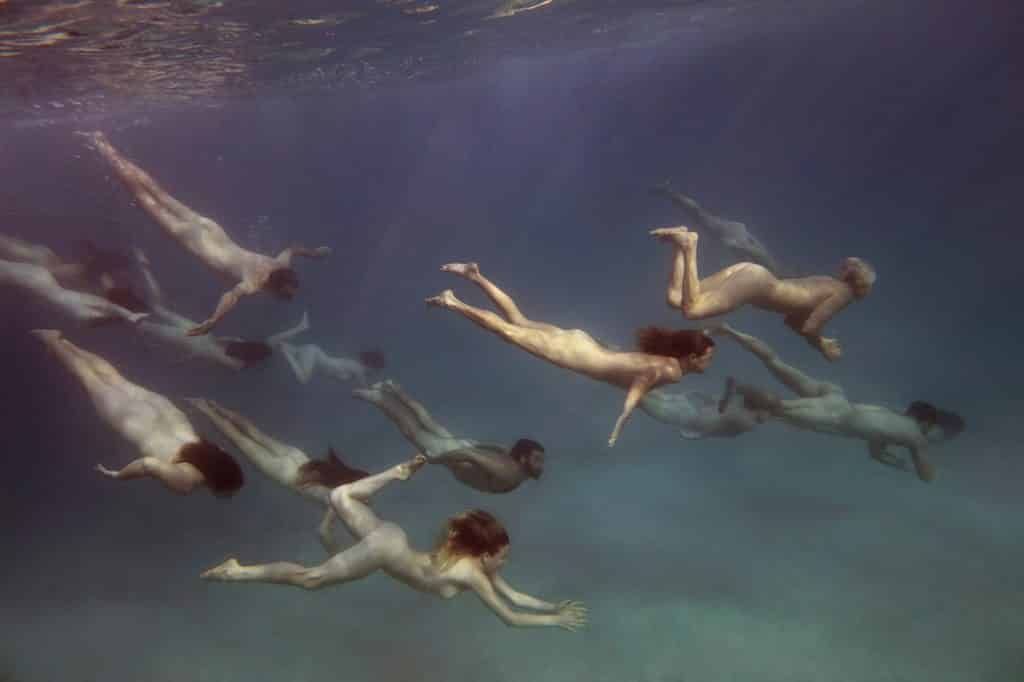Marking its 50th anniversary year, Mornington Peninsula Regional Gallery focuses on humankind’s enduring infatuation with the ocean.

God made it on the second day, Venus was birthed from it, the Titanic rests in it, and you’ve probably swam in it; the sea has been a fascination of humans since our existence. The vastness of liquid that covers 70% of earth inspires us and terrifies us with its magnitude, the depths of its unknown, and its ability to cleanse and destroy.
This omnipresent body of water connects us and divides us; a vehicle for travel and exploration and a demarcation of boundaries. Yet at the same time, we also insist upon on its symbolism. Nothing strikes us with its sublimity quite like the ocean; rapture with it is practically a prerequisite ofthe human condition. And what better setting to explore this fascination than the place where Australia’s Prime Minister Harold Holt took his final ocean swim: Mornington Peninsula.
Guest curated by Dr Vivien Gaston, Sublime Sea: rapture and reality has been years in the making and was preceded by other oceanic-centred exhibitions at Mornington Peninsula Regional Gallery including Sea of Dreams: The Lure of Port Phillip Bay 1830-1914 in 2011. Featuring over 100 items spanning historical paintings, photographs, texts, film, decorative arts, sculpture and multimedia art, the show contrasts the sea as a primal source of life and human imagination with harsher realities of the Anthropocene including sea warming, plastic pollution and the distressing experiences of refugees.
The show guides viewers through three thematic perspectives starting with oceanic journeys – high seas, tempestuous tides, tragic shipwrecks and Byronic drama as shown through the likes of Oswald Walter Brierly’s highly emotive Yacht WANDERER rounding Cape Horn 1872 (1847) and Greg Semu’s epic The Raft (2016).
Next is the grotto, where artworks explore mythology and morphology, from Rupert Bunny’s romantic mermaids in Sea idyll (c.1891) to Petrina Hicks’ symbolic photographic composition Venus (2013). The centre of the exhibition, this space draws together a combination of glass art, ceramics and museum specimens to form a cabinet of curiosities aimed to evoke wonder and imagination.
Finally, the theme of immersion aims to leave the viewer with a grounded sense of reality, as typified by Anne Zahalka’s work Sea Bird Colony, Admiralty Rocks with turbulent seas, Lord Howe Island (2019) which shows a natural-history-museum-style diorama dotted with litter and garish balloons; a zeitgeist of humankind’s frivolity. As Dr Gaston states, “Viewers will also be confronted with the potential loss of these worlds, the preciousness of the sea and its creatures and the threats to their wellbeing and very existence.”
Tips for a visit to Mornington Peninsula Regional Gallery
Whilst in the Mornington Peninsula area, extend your time exploring art and nature by visiting the Montalto Sculpture Trail and Pt Leo Estate Sculpture Park (both approximately 30 minutes from MPRG). Or head to Cheviot Beach for a swim (and keep an eye out for PM Holt).